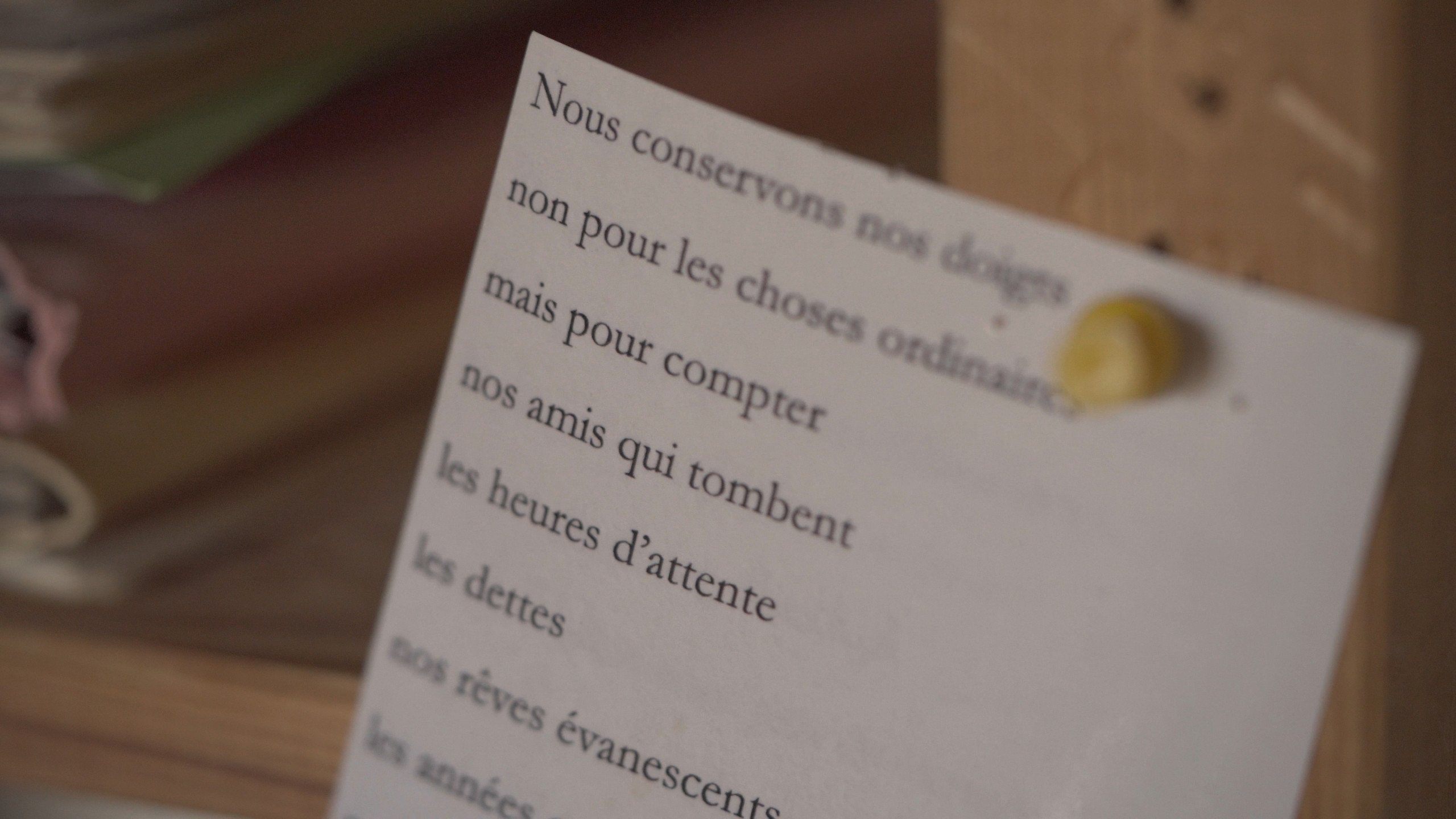The film opens with the date of Jean-Luc Godard’s passing. Soon after, we see a half-smoked cigar resting in an ashtray – as though he had only just left the room. Could you tell us about the origin (the initial impulse) and the genesis (the making) of the film?
For my part, the idea – or rather the initial desire, as with the exhibitions, live screenings, and encounters around his films – to ‘open up’ the technique, was to share emotions, to share what we had seen, experienced, and worked on within the intimacy of that “cinema house”.
But then, suddenly, came the stupor of his departure, the silence, the standstill. Time frozen inside, fleeing outside.
In that stillness, within that suspended time, the arrangement of things, the books together on the shelves, the objects, the collages and other pinned compositions struck us. One could see the marks, traces, signs, and the feelings that had inhabited him.
A constantly moving camera, gliding at a steady pace; frames that quickly tighten around close-up views of objects (books, tools, DVDs), then move in still closer, to brushstrokes of paint: can you explain your visual approach in composing the film, this singular way of leading the viewer through the studio?
Éloge de l’amour sits neatly shelved above 5000 ans de dettes, and so on. Two shelves – those of two films in progress, Drôles de guerres and Scénario. The associations, the works-in-progress are all there, disassembled. I wanted to wander through that world like an ant, meandering from branch to branch in that forest. A pinned note reads, “The years that drag us toward the end…”
“Romeo and Juliette” – the Cuban cigar rests on a hand-written calendar. Opposite his worktable, written in graphite on the roughcast wall above a pinned collage is, “What does it matter – everything is grace” – like the “scenario” of where he came from and where he was going.
If we start from the top, then it all begins at the top of cinema (a 35mm image) – of female figures, then moves through love, to the gaze of Roxy at its heart, then human suffering, a window with a sunset, an image of death opening onto a forest of vivid colours surrounding, embracing, watching over an old man, and so on.
You are faithful to the master’s lesson: equality and fraternity between image and sound. After the creaking of the wooden stairs as the visitor ascends, the soundscape is composed solely of excerpts from JLG’s films. Among those from which you borrow “phrases”, Éloge de l’amour, and to a much lesser extent Notre musique, are by far the most present. The studio on screen, the œuvre on the soundtrack? Why did you choose to privilege these two films?
Éloge de l’amour is the film that sets everything in motion, he told us – in better words than we can find – the one that led him to Le Livre d’image. Humbly, that is where we started again, with just a few touches that suddenly seemed to harmonise intimately with the time, the place, the solitude and the work.
Then Notre musique too marked the beginning of something, and fragments of it resurfaced in Drôles de guerres. And magically, its final “paradise” sequence married – with a surprising, striking, fascinating grace – the paradise of vivid colours pinned to his wall.
A great softness emanates from the film – from the continuous movement of the image, but also from the choice of sound excerpts. A gentleness and calm that are not those of solemnity or mourning. Is this connected to an idea that recurs more than once: that there may be childhood and old age, but no such thing as adulthood? Is this the image of JLG you wish to retain and share?
Yes – a camera with gentle movements, like our own steps in his home.
Childhood and old age? No, I never saw him as old… quite the contrary! Only the body was.
Cyril Neyrat
